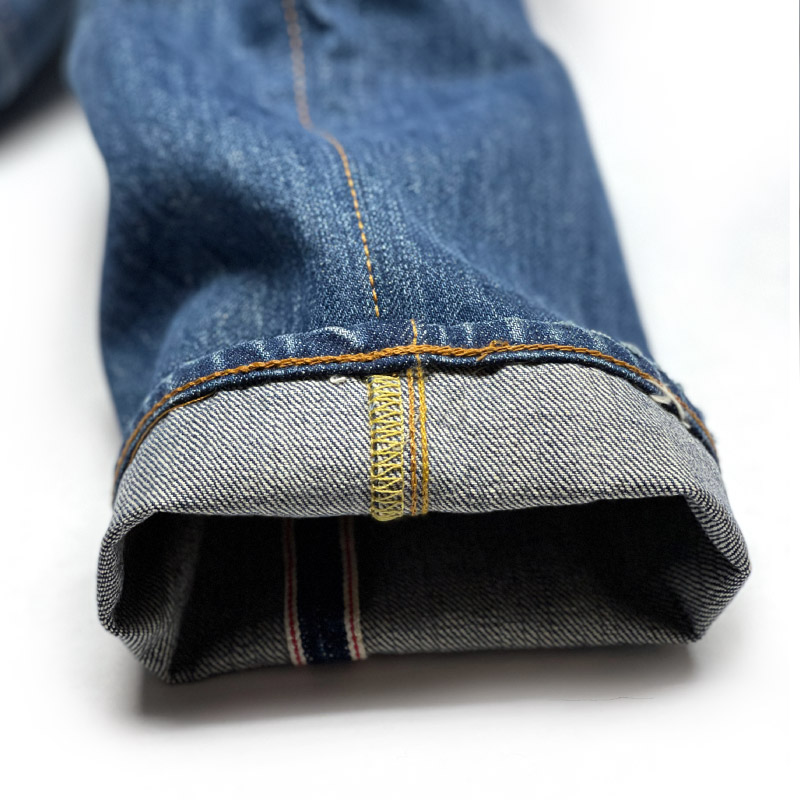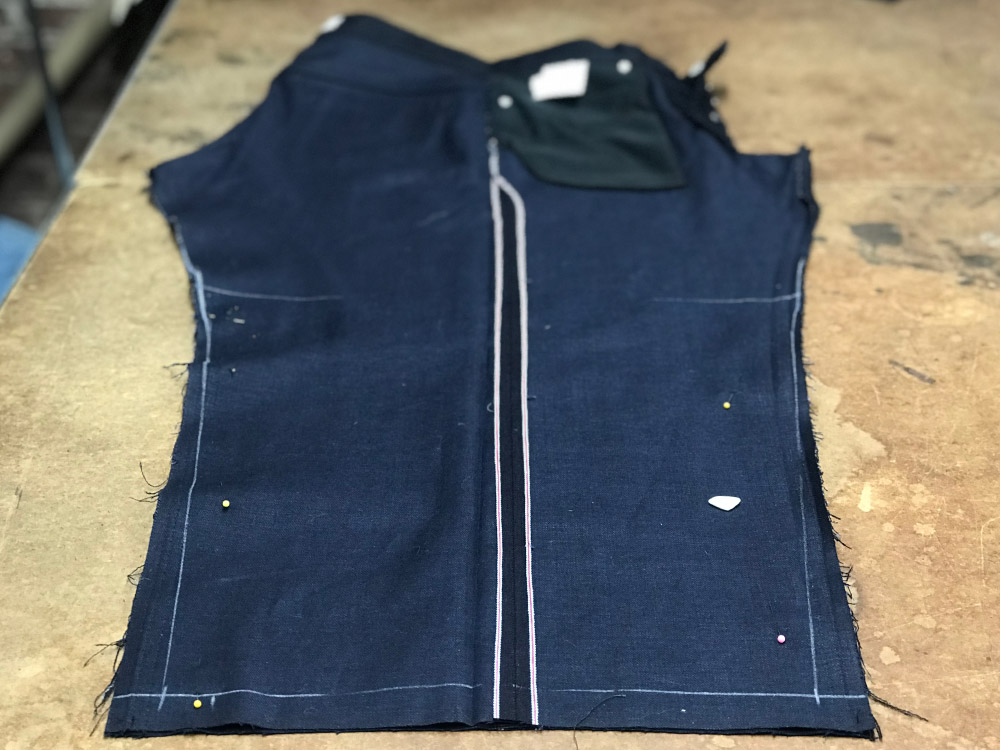Make The Fit Your Own
By Maurice Malone Published Jan. 10, 2020
Don't settle for brand standard fits. With tapering, you can customize the leg of jeans, making the fit your own.
Sometimes that slim fit is not slim enough. Or the tapered jean is not your definition of tapered. Sometimes your athletic thighs force you into loose fit jeans and wishing a brand you admire had slim-fit options for guys with larger thighs. All these are good reasons for tapering alterations.

When we work on your jeans, our goal is to alter and send them back customized as if they came from the factory with your requested fit. For denim constructed with an overlock and single-needle topstitching like this pair of Samurai jeans, our technique is: First remove the topstitching on the entire inseam. The inseam is then flattened and each leg shape is re-drafted.
If the jeans require a shorter inseam, we do that first, leaving an extra inch or so for final cutting. After the overlocked inseam is re-sewn, we add a new single needle topstitch with a thread color that best matches the original. The hem is chain stitched and the jeans are finally pressed and complete.
Inseam types explained: Flat-felled vs. Overlock
Overlocked inseam with single-needle chain-stitching

Flat-felled inseam with double-needle chain stitching

The inseam of jeans, to a great degree, are made in two different types of constructions, Flat-felled or Overlock. Many professional tailors and denim repair specialists will own overlock machines, but still not have the ability to sew a new single-needle topstitch without joining old-to-new stitch lines and opening the outseams. A lot of times people get their selvedge jeans hacked because a tailor took the incorrect and easy way out by tapering their jeans from the outseams. We are a manufacturer of jeans and have the industrial equipment that allows us to sew a new chain stitch single-needle along the inseam without opening the outseams.
For the majority of tailors and denim repair specialist, the toughest inseam to handle by far is the flat-felled seam. Most try to avoid the flat-felled altogether by tapering from the outseams. Some will take on the task by taking jeans apart up to the knees, and then use two passes with a single-needle chain stitch, or even worst, a regular lockstitch machine to close the seams, joining new stitch lines to the original sewing. To do this, the outseams also must be opened.
Opening the outseams is more work for tailors & seamstresses. However, it is only a cause for concern for the customer when the jeans have been washed or are aged. This is because it is difficult to exactly match the original wear or washed marks. If the lines are not exactly matched, the dark areas originally on the inside become visible, or the high contrast aging effects are hidden by being sewn inside the seams.

As written about in some of our previously posted articles, we completely remove the inseam stitching. Opening the jeans in butterfly fashion, we re-draft the shape and close the jeans in one pass on a heavy-duty flat-felled industrial sewing machine. These machines are rarely used outside of garment factories or very committed small-batch denim makers. It's extremely unlikely to find them at tailors, denim repair shops, local dry cleaners, big denim brand alterations in-store shops, etc. Besides having the machine, a skilled operator would be required.
In closing, we have jeans shipped to us from all over the world from those who are serious about customizing. In your search for fit alterations, do your homework. Before handing over your favorite denim or work pants to someone, make sure you won't be disappointed. Ask questions. If you opt for local convenience and are not happy with the result, we are accustomed to fixing other tailor's mistakes. We will be here for you.
